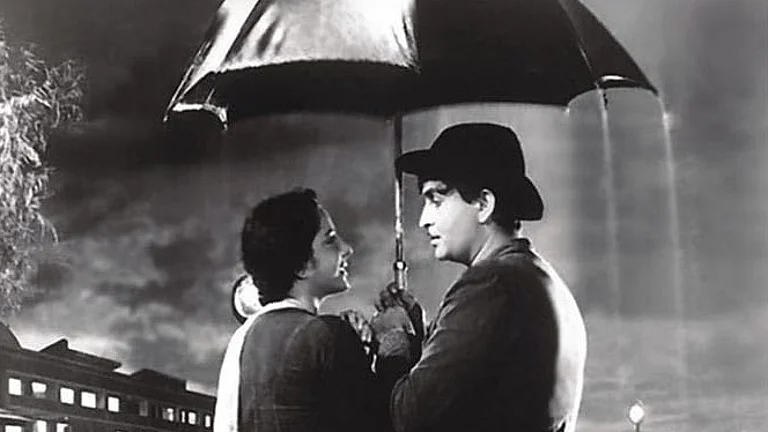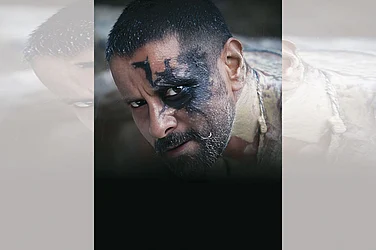At the very outset, rape culture is not only the act of committing the heinous crime of rape, but also everything in a culture that legitimises that violence and the subjugation of women in structures of power. Within the spaces of the home, workplaces, and public spaces, the patriarchal idea that women are not equal to men and can be reduced to only our bodies, dehumanising us, is the cornerstone of rape culture.
Hindi cinema has a long-standing history of legitimising and perpetuating rape culture. Celebrating objectification of women, using women as pawns in power struggles between the ‘hero’ and the ‘villain’, hyper-sexualising of women as objects of desire, reinforcing ideas of patriarchal control on women in relation to men, demonising strong women, and creating saviours out of men who ‘emancipate’ women, commercial Hindi cinema through the ages has validated and fuelled rape culture across the languages of expression, whether it is visuals, or dialogues, or lyrics.
Post the cinema of the 50s, with women in focus and Nehruvian socialist hope in films, patriarchy reared its head reared more viciously from the 60s onwards. From the 70s on, the most popular films of the time reduced the female protagonists to supporting roles, which would aid the narrative of the ‘hero’. Invariably, the ‘villain’ became a ‘villain’ due to his lecherous gaze/action at the hero’s love interest/mother. The hero found his purpose in avenging the said attack, or ‘saving’ her from the said attack, and suddenly the role of the female protagonist moved from who she was and what she desired, to what she could be for the male lead. And how she could be pivotal to the plot of making the hero, a hero. The versions of the Ramayan and the Mahabharat that ran on TV, are exactly set in the same mould. Soorpanakha is punished for her desire with her nose (and breasts and ears) cut off, that essentially disfigures her face and attacks her for her agency, which had propelled her to act on her desire, or Sita, who had to go through a ‘justified’ agnipareeksha to prove her ‘virtuosity’, which loosely meant not having been made ‘impure’ by the touch of another man. Thus, reinforcing a man’s idea of ownership on a woman, his unchallenged authority towards her and her life, and her depiction of a servile woman in complete service and devotion of the ‘righteous’ male God. Draupadi was publicly humiliated as Krishna came to ‘save’ her. In all of these depictions, the woman is a dehumanised version of herself, with no agency and no gaze, and while things are done to her, that move the plots forward, she—her identity and her pain, is merely incidental to them.
This expectation of servitude is carried through language. ‘Pati’ itself translates to ‘owner’ and with that the notion of Pati Parmeshwar eulogised in Kabhi Khushi Kabhi Gham (2001), is equating the said owner to God. If in a relationship between two people, one is considered God, the other will always be a devotee. This has been reinstated repeatedly, across cinema to create culture memory. Songs like ‘tere liye palkon ki chaadar bunoon’ from Harjaaee (1981), to ‘tere haath se pi kar paani, daasi se ban jaaun raani’ from Dilwale Dulhaniya Le Jaayenge (1994), have celebrated the servitude of wives. And it isn’t just the inequality of marital relationships that perpetuates rape culture. This inequality is alive in all romantic relationships. When Badshah sings ‘ghoor ke dekhe jo koi tujhko kaan pe uske chaar laga doon’ as the female voice only keeps imploring for her song to be played in ‘DJ waale babu’ reinforces the power structures in gender. It is a heightened version of the same sentiment that propels films like Animal (2023) and Kabir Singh (2019), which are some of the highest grossers of the years they were released in. These showcase and justify violence against women as a sign of uncontrollable love, and toxic ownership as ways of relationship.
Desire being depicted on screen, whether for a man or for a woman, has always had the female form being deeply sexualised, and always through the male gaze. Films like Jism (2003), Paap (2003), and Murder (2004), while taking into account female desire, did not legitimise it, but exploited it to sell the female form to grab eyeballs. And this is true for visual and spoken language as well as lyrics. ‘Item’ songs created for male desire, like ‘Chikni chameli’ have the camera placed threateningly close to the female actor’s body, completely robbing her of agency. Cinematography changes the gaze, and distance determines agency. Both of these are perpetually flouted. Choreography and placement of camera also add to the objectified depiction in songs. As recently as in ‘Aaj ki raat’ from Stree 2 (2024), the choreography is designed for cleavage show to cater to the male gaze. ‘Mai toh tandoori murgi hoon yaar, gatka le saiyyan alcohol se’ from Dabangg 2, reduces the woman and likens her to a chicken. The song ‘Buzz’ has lines like ‘Jahan se hona chahiye wahin se hai tu thick’, which are deeply sexist.
Consent has perennially been flouted by Hindi film lyrics over the years. From ‘Tera peecha na mein chhodoonga soniye’ from Jugnu (1973), to ‘Ab tu haan kar ya na kar teri marzi soniye, Hum tujhko utha kar le jayenge, Doli mein bitha kar le jayenge’ from Jab Pyaar Kisi Se Hota Hai (1998) all the way to ‘Khaali peeli rokne ka nahin’ from Phata Poster Nikla Hero (2013), such songs and countless more have only consistently reinforced the idea that women’s consent does not matter. The idea that women’s ‘no’ means everything other than that (na mein haan), has taught generations of men that women’s said refusal is either not what they mean, or can easily be flouted to stake claim. The idea of ‘staking claim’ on a woman is itself rooted in power structures that obliterate the fact that women have agency and can claim it.
When ideas of consent are flouted at such a scale, it legitimises the acts of physical closeness. Where the woman’s resistance is easier to ignore, or justify as just an ‘act’. Rejections by women make patriarchal, toxic men hostile and they go on to attack women to show them their ‘rightful place’ or ‘aukaat’. This ‘aukaat’ is the patriarchally accepted view of the place of women in society that conforms to the idea of women being servile and submissive to the wills and whims of men.
These dialogues and songs are a part of cultural memory. They create culture idioms. Set to infectious beats, these lines take hold of people’s minds, as does the visual representation. The reason why we have an Animal (2023) that works is because a Kabir Singh (2019) came before it and that made money. As long as films, songs and dialogues like these are written and celebrated, society will find its legitimacy on how it treats women. Many would argue that it is not cinema that is to blame, or that cinema that is created responds to the demands made of it. However, cinema and art have the strength to gently guide society the way they wish to. So here’s hoping that films like Laapata Ladies (2023) and its subtle ways of showcasing major feminist narratives create more business than the films and songs that we’ve been stuck with so far.



























